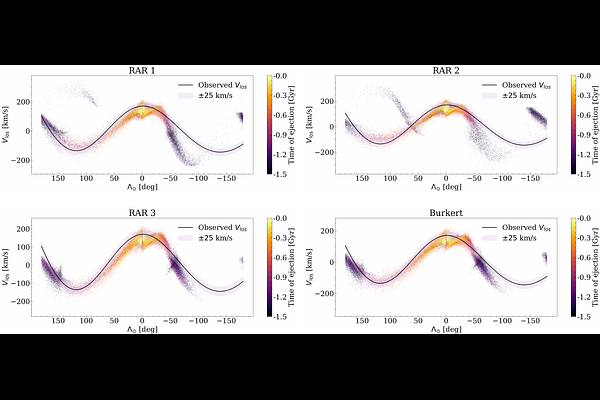The Sagittarius stellar stream embedded in a fermionic dark matter halo

The Sagittarius stellar stream embedded in a fermionic dark matter halo
Santiago Collazo, Martín F. Mestre, Carlos R. Argüelles
AbstractStellar streams are essential tracers of the gravitational potential of the Milky Way, with key implications to the problem of dark matter (DM) model distributions, either within or beyond phenomenological $\Lambda$CDM halos. For the first time in the literature, a DM halo model based on first physical principles such as quantum statistical mechanics and thermodynamics is used to try to reproduce the 6D observations of the Sagittarius (Sgr) stream. We model both DM haloes, the one of Sgr dwarf and the one of its host with a spherical self-gravitating system of neutral fermions which accounts for the effects of particles escape and fermion degeneracy, the latter causing a high-density core at the center of the halo. Full baryonic components for each galaxy are also considered. We use a spray algorithm with $\sim 10^{5}$ particles to generate the Sgr tidal debris, which evolves in the gravitational potential of the host-progenitor system, to compare with the full phase-space data of the stream. We repeat this kind of simulations for different parameter setups of the fermionic model including the particle mass, with special attention to test different DM halo morphologies allowed by the physics. We find that across the different families of fermionic halo models, they can only reproduce the trailing arm of the Sgr stream. Within the observationally allowed span of enclosed masses where the stream moves, neither the power-law like, nor the polytropic behaviour of the fermionic halo models can answer for the observed trend of the leading tail. A conclusion which is shared by former analysis using other type of spherically symmetric haloes. We conclude that further model sophistications such as abandoning spherical symmetry and including the Large Magellanic Cloud perturber are needed for a proper modelisation of the overall Milky Way potential within this kind of first principle halo models.